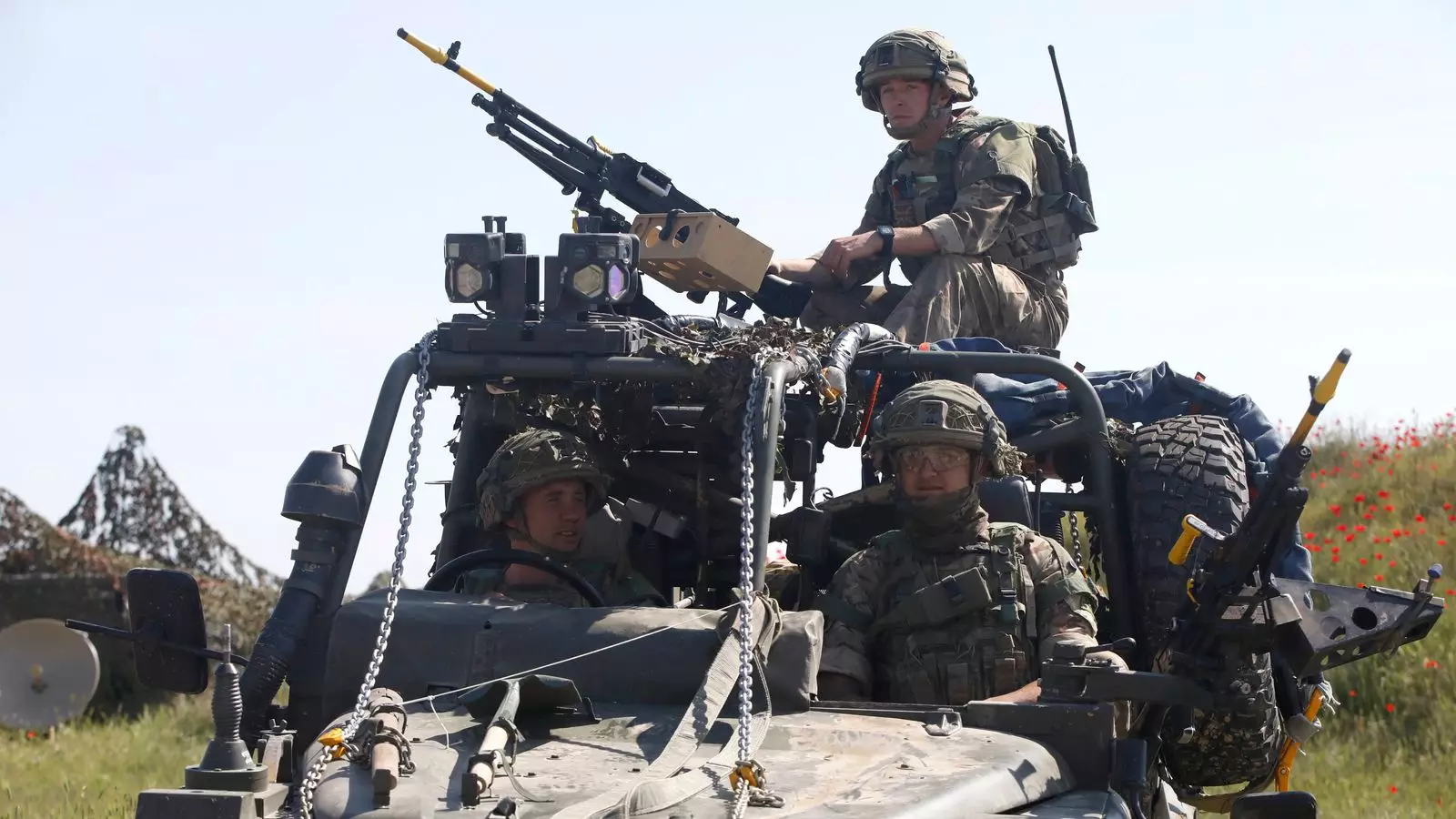The ongoing conflict in Ukraine has raised pressing questions about national and international security, especially in the wake of a potential ceasefire with Russia. Western officials are contemplating the deployment of British and other European troops in various strategic locations across Ukraine, including urban settings, seaports, and critical infrastructure such as nuclear facilities. This proposed military presence serves a dual purpose: it acts as a deterrent against potential escalations from Russia while providing the necessary assurance to Ukraine’s population and its diaspora.
As the war lingers on, the landscape of Ukrainian cities remains perilous. The proposed troop presence aims to fortify security and bolster the confidence of Ukrainians who have been displaced, encouraging them to return home after an exodus triggered by the intensity of the conflict. While the precise number of troops has yet to be established, estimates hover around 30,000 personnel, indicating a substantial yet manageable force aimed at aiding stabilization efforts in the region.
Importantly, officials have ruled out direct confrontations with Russian forces on the front lines. Instead, the envisioned deployment is designed to operate as a reassurance force, aimed at safeguarding key sites while steering clear of any “peacekeeping” label. This strategic distinction may serve to alleviate concerns from both Russia and Ukraine about an aggressive military presence, thus fostering an environment of dialogue and potential reconciliation.
In addition to the implied need for ground forces, a multi-faceted approach incorporating air and naval capabilities is being discussed. Fast jets conducting air policing from bases outside Ukraine could facilitate the re-opening of airspace for civilian traffic—a significant step toward normalcy given that no civilian flights have been permitted since the onset of the conflict. This aspect resonates with existing NATO operations in the Baltic states, where airspace is actively monitored.
The maritime dimension of Ukraine’s security cannot be overlooked either. The potential deployment of warships to the Black Sea aligns with the pressing necessity of demining operations and maritime patrols aimed at restoring safe navigation for shipping lanes. Such measures could be key to revitalizing Ukraine’s economy and securing trade routes, heavily disrupted by the ongoing hostilities.
While European forces may play a pivotal role in Ukraine’s future security framework, there is a prevailing sentiment that U.S. involvement remains critical. Leaders like Sir Keir Starmer have emphasized that a successful reassurance mission would require a form of a “backstop” from the United States, a notion yet undefined but presumed essential for deterring renewed Russian aggression. The strategic calculus calls for American military resources, possibly stationed closer to Ukraine, to send a robust deterrence message to Moscow.
The broader geopolitical dynamic complicates things further. Russian officials have actively denounced any thoughts of NATO or European troop presence in Ukraine, labelling it “unacceptable.” These developments echo President Volodymyr Zelenskyy’s previous statements advocating for a more substantial international security force, suggesting that a deployment comprising approximately 110,000 personnel would be necessary. However, initial discussions seem to converge around a much smaller contingent of about 25,000 to 30,000 troops, reflecting a divergence in perspectives between Ukraine and its allies.
As Ukraine seeks additional support, President Zelenskyy stressed the necessity of securing guarantees from NATO partners. These guarantees could manifest in various forms, including financing or logistical support for the creation of a formidable national defense agency akin to a million-strong armed force, supplemented by robust air defense systems. The focus on acquiring complex military technology, such as the U.S. Patriot missiles, underscores the urgency of ensuring that Ukraine can defend itself effectively in a volatile regional landscape.
The potential deployment of European troops in Ukraine offers an intriguing mix of strategic reassurance and tactical capability to stabilize a war-torn nation. This prospect invites the international community to consider not just the military dimensions of security but also the vital political, economic, and humanitarian factors that must be addressed as Ukraine navigates its uncertain future. Without a comprehensive plan for post-conflict stabilization, the hard-won peace could remain fragile, susceptible to the whims of ongoing geopolitical tensions.


Leave a Reply